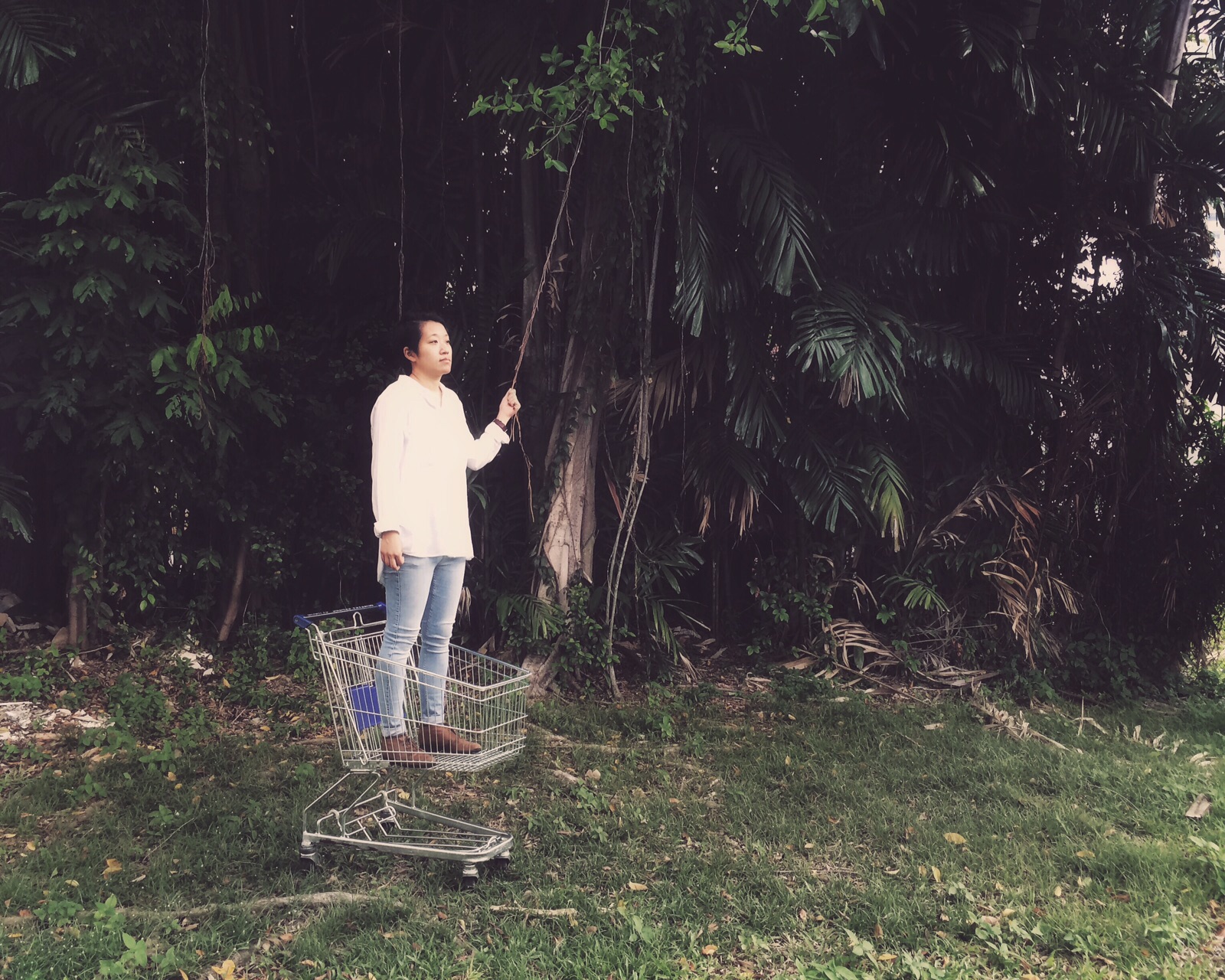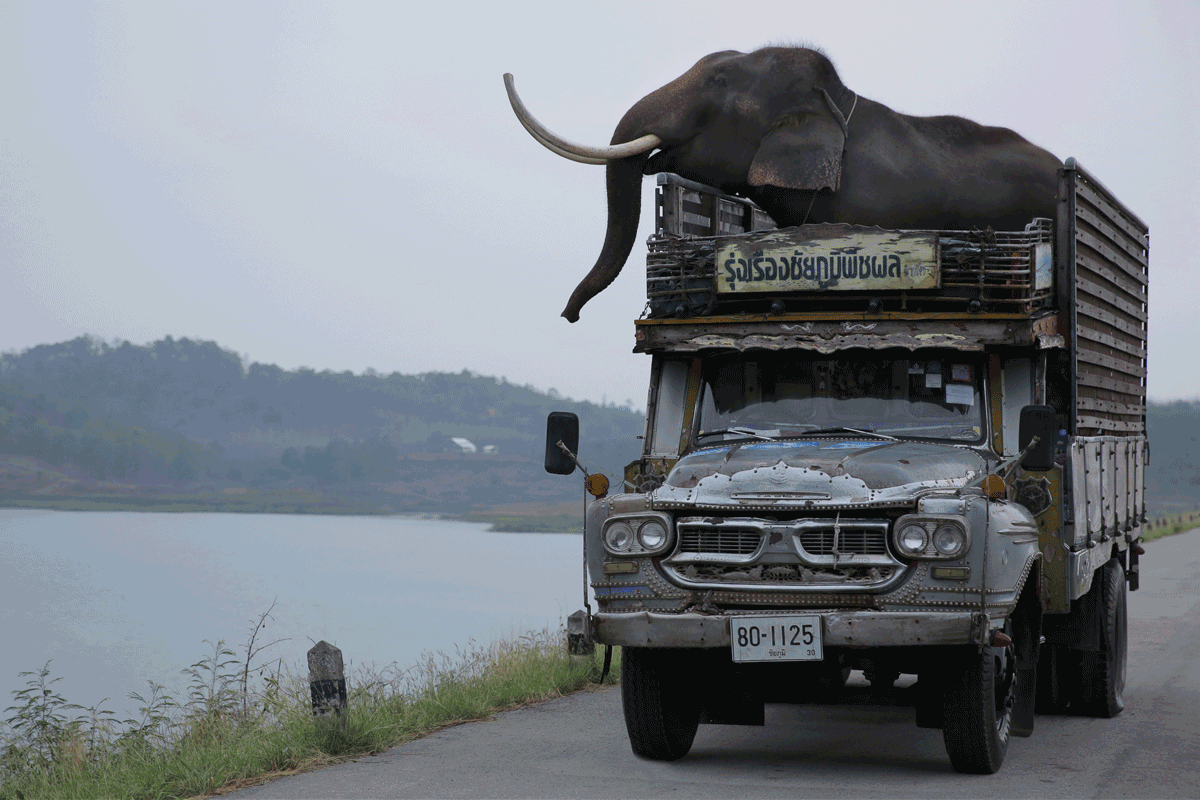AN ARCHITECT AND AN ELEPHANT ON A JOURNEY OF SELF-DISCOVERY THROUGH THAILAND IS THE PREMISE OF THE STORY BEHIND POP AYE, THE DEBUT FEATURE FILM BY SINGAPOREAN FILM DIRECTOR KIRSTEN TAN CURRENTLY ON ITS WAY FOR SCREENING AT THE RENOWNED SUNDANCE FILM FESTIVAL IN 2017. ART4D SPOKE WITH TAN TO LEARN MORE ABOUT HER CREATIVE PROCESS AND HOW POP AYE CAME TO BE.
Could you introduce your upcoming film Pop Aye, which I understand was shot right here in Thailand?
KT: POP AYE is a road movie with an elephant set in Thailand. It tells the story of Thana, a disenchanted architect, who bumps into Popeye, his long-lost childhood elephant, on the streets of Bangkok.
Dissatisfied with his current life in the city, Thana takes his elephant on a road trip across Thailand, in search of the rural farm where they grew up together. He thinks that if he helps his elephant find home, he might find himself along the way too.
Along the way, they meet a host of characters, from a fortune-telling vagabond to a pokerfaced policeman, a crematorium monk to a lonely karaoke singer, who color their journey, as various mishaps—sometimes absurd, sometimes poignant, sometimes both absurd and poignant at once—befall them on the road.

Pop Aye, Still, 2016, Image courtesy of Kirsten Tan
I read that the story was inspired by your witnessing of a group of village boys pulling an elephant to sea to shower him. Are many of your works born from an image/visual encounter? – Are your stories built from an image up?
KT: My works are not always born from visual encounters but they often do come from that. Even if it isn’t from something I’ve witnessed in real life, I’ve written films based on dreams, like my short film, Sink. I suspect I’ve quite an active subconscious. Personally, there are a few stages of writing a story to me – in the very initial draft, I would often just be taking notes from what I see in my head or in my mind’s eye. More often than not, different scenes of a film come to me rather fully formed visually, like there’s a DVD playing inside me and I’m just taking notes as I go along. At that stage, I don’t question myself too much and allow my brain (or subconscious if you will) create and play whatever it wants. The later drafts are about making sense of what I see, finding meaning and deconstructing those images. So the creation of a story happens in 2 steps, one where I let myself and my imagination completely go, and second where the logical bit of me kicks in to create connective tissues between those images so a narrative is formed.

Sink, Still, 2009, Image courtesy of Kirsten Tan

Sink, Still, 2009, Image courtesy of Kirsten Tan
You have lived in several countries over the past few years. How has the experience of not only living, but also working and creating in different environments affected your creative process?
KT: Filmmaking styles and aesthetics differ across different cultures. Living in all these cities, I absorb a little from everywhere I go. Having a broad-based understanding of form and style makes me feel a little like a chameleon sometimes where I can blend between those different modes of expressing. It certainly is useful for commercial works but it makes me question myself a lot harder when I make my own films. Ultimately though, I do believe that form follows function, or content in this case, and I would go with a style that best fits the story. Thankfully, I believe there is a running thread in the kinds of stories I tell. I like stuff that’s a little offbeat, a little surreal, with certain humanistic themes and that has always been the same wherever I go to.

Pop Aye, Still, 2016, Image courtesy of Kirsten Tan
Aside from your experiences abroad, I understand that you still call Singapore home. Is there any quality of, or signature Singaporean style that you feel carries through within your work regardless of shooting/living location? How would you describe said character?
KT: Artistically, Singapore is an extremely young country and to be quite honest, I don’t think we’ve developed much of a signature cinematic style yet. Looking at the works of Singaporean filmmakers reminds of a walk through the city where you see a ton of imported cultures from all over the world, whether it’s European, American, Japanese, Korean and so on. Culture-wise, we’ve been colonized by countries of influence. On one hand, it’s a pity that we don’t have a core identity, but on the other hand, it is liberating to not be tied to a certain cinematic lineage – you have the freedom to be whoever you want to be without any presupposed cultural baggage.

Pop Aye, Still, 2016, Image courtesy of Kirsten Tan
Aside from your personal projects you also do some commercial works on the side as well. I’m curious if you approach the two realms of work with a similar stride or as distinctively unrelated outlets for your skills? Perhaps it depends on the project?
KT: At the core, I’m a real perfectionist so I apply a certain obsession and rigor to every single project I take on, whether it’s my own work or not. That being said, and perhaps this is obvious, the emotional stakes are much higher when I do my own films. It’s a lot more painful but a lot more rewarding at the same time. I don’t mean to sound insane but doing commercial work from time to time actually relaxes me. That responsibility of the final decision is given to someone else (whether the client or the agency) and I get to play with different gadgets and equipment because the budget is usually high. It’s an area where I get to build and improve my craft and I bring all of that back to my own films. Working commercially also forces you to deal with schedules, with deadlines, with sometimes unpleasant people and tells you clearly in bold that you are not the master of your own universe. That isn’t a bad attitude to bring into your own work because artists who work in isolation for too long can become overbearingly self-indulgent and ill-disciplined sometimes.
What’s next and on deck for you? Current projects?
KT: I have some ideas brewing in my head for now but since the completion of POP AYE, we have just been preparing for Sundance and I haven’t had the chance to pen anything down.
And last but not least – where and when can we see the film?
KT: POP AYE will be doing its festival run in the months ahead and hopefully will make it to Thailand in the later bit of 2017.

Director Kirsten Tan, Image courtesy of Kirsten Tan

